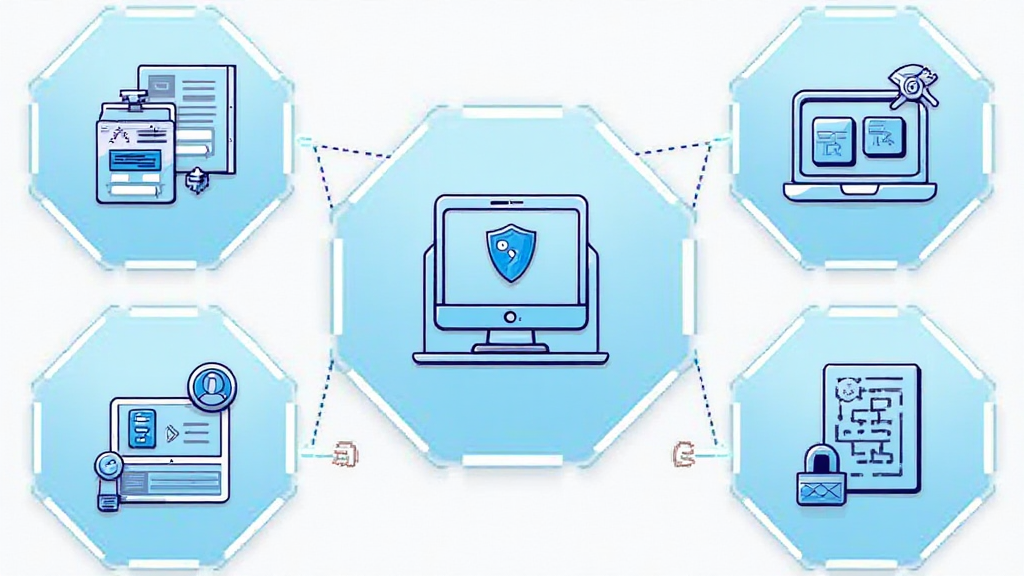2025 Blockchain Security Standards: A Comprehensive Guide for Digital Asset Protection
As the digital landscape evolves, securing your cryptocurrency investments has never been more critical. In 2024 alone, over $4.1 billion was lost due to DeFi hacks, highlighting the urgent need for robust blockchain security standards. This article dives deep into the essential practices for protecting your digital assets, making it a must-read for anyone involved in the cryptocurrency market.
Understanding the Importance of HIBT Crypto Front
At the forefront of blockchain innovation, the HIBT crypto front platform offers unique solutions that adhere to the latest security protocols. Establishing a secure environment for transactions is key to gaining user trust and fostering market growth, especially in rapidly emerging markets like Vietnam.
According to recent statistics, the Vietnamese cryptocurrency user growth rate stands at an impressive 58% annually. This growth underlines the necessity of adopting strong security practices, ensuring that new users can engage with the platform safely and confidently. Including local language elements, like the Vietnamese phrase “tiêu chuẩn an ninh blockchain,” enhances the accessibility and relevance of blockchain discussions for local audiences.

Key Components of Blockchain Security
- Consensus Mechanism Vulnerabilities: Understanding how different consensus mechanisms work, such as Proof of Work or Proof of Stake, helps identify potential weaknesses.
- Smart Contract Auditing: An essential aspect of blockchain security. Knowing how to audit smart contracts can prevent unauthorized access and errors that could lead to significant losses.
- Cold Storage Solutions: Using hardware wallets, like Ledger Nano X, that reduce hacks by 70% provides an additional layer of security for storing crypto assets.
Real-World Application of Security Standards
Imagine a bank vault designed specifically for digital assets. Just as a physical bank secures its customers’ savings, blockchain technology must provide robust mechanisms to prevent theft and fraud. Platforms like HIBT crypto front incorporate these principles, applying advanced encryption methods to safeguard user transaction data.
Emerging Threats and Challenges
The ongoing evolution of cyber threats, including social engineering attacks and advanced phishing techniques, requires continual updates to security measures. In 2025, the rise in decentralized finance (DeFi) platforms presents both exciting opportunities and notable risks. As decentralized systems offer greater user control, they also expose users to vulnerabilities if the underlying technology is not adequately secured.
Implementing Effective Security Measures
Implementing these security measures can help mitigate risks:
- Regular Security Audits: Conducting thorough and regular audits of your assets and their associated smart contracts to detect and rectify vulnerabilities.
- User Education: Educating users about safe practices, including recognizing phishing attempts and securing personal information.
- Privacy Enhancing Technologies: Utilizing technologies that enhance user privacy and data protection helps build trust within the community.
Conclusion: Building Trust in the Digital Age
As we move towards 2025, establishing and adhering to stringent blockchain security standards will be crucial for both users and providers alike. The HIBT crypto front is poised at the intersection of innovation and security, demonstrating its commitment to protecting user assets and fostering a more secure cryptocurrency environment.
With the growing popularity of cryptocurrencies in markets like Vietnam, increasing the awareness and practical understanding of essential security protocols is imperative. A well-informed community can better navigate the volatile landscape of digital assets, ultimately paving the way for a brighter and safer future in cryptocurrency trading.
Disclaimer: This article is not financial advice. Please consult with local regulations and consider speaking with a financial advisor before making investment decisions.




